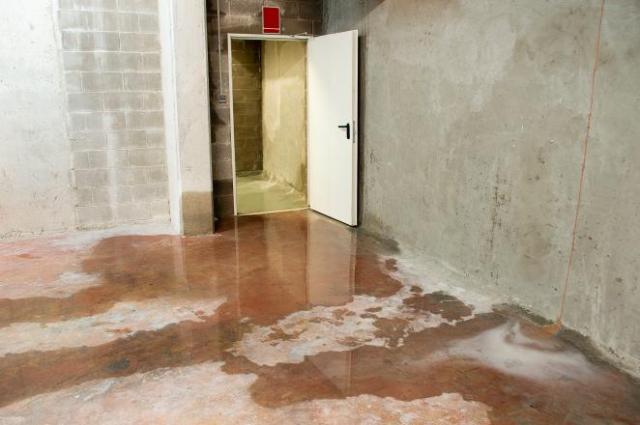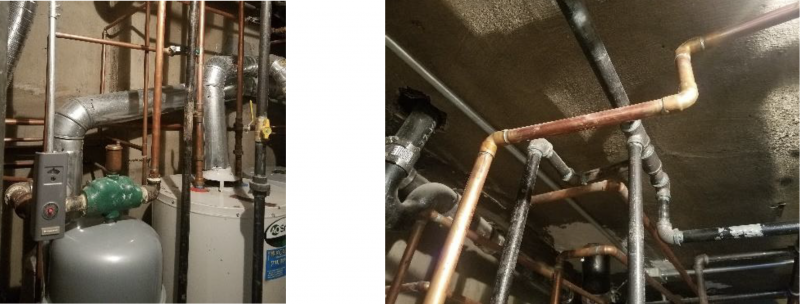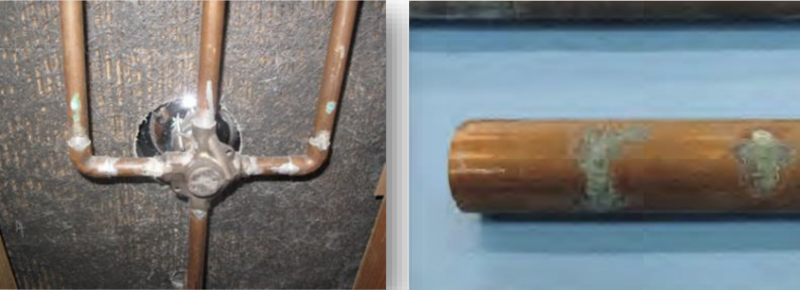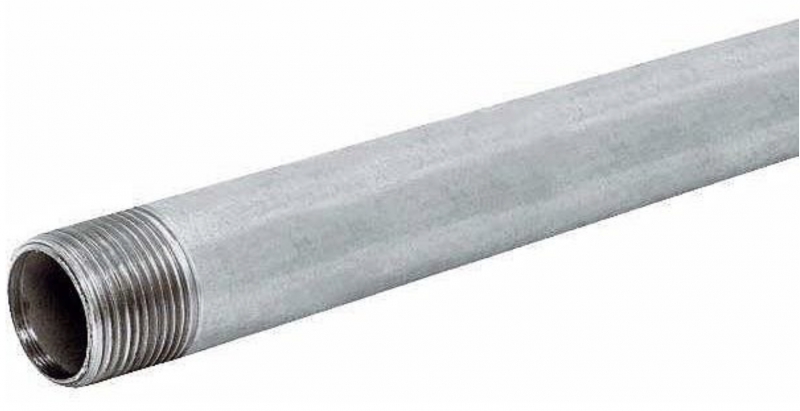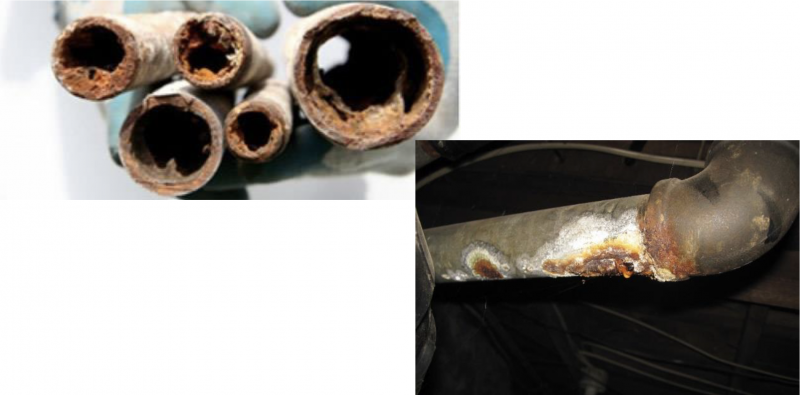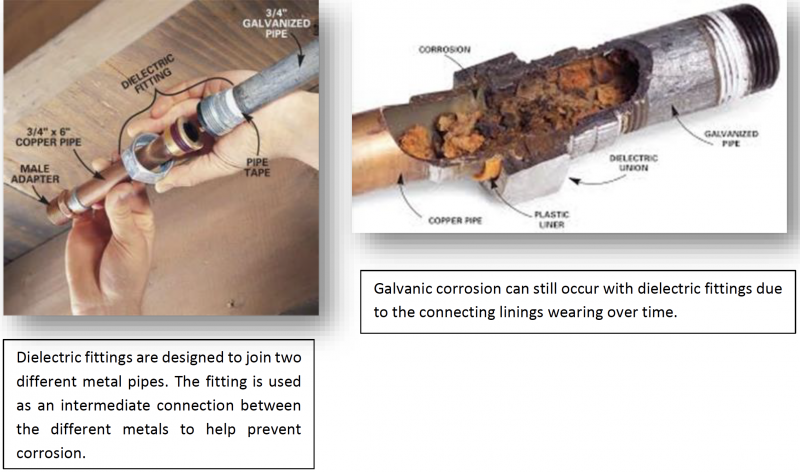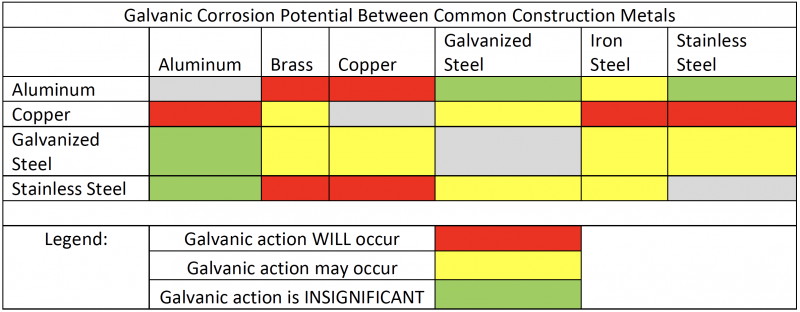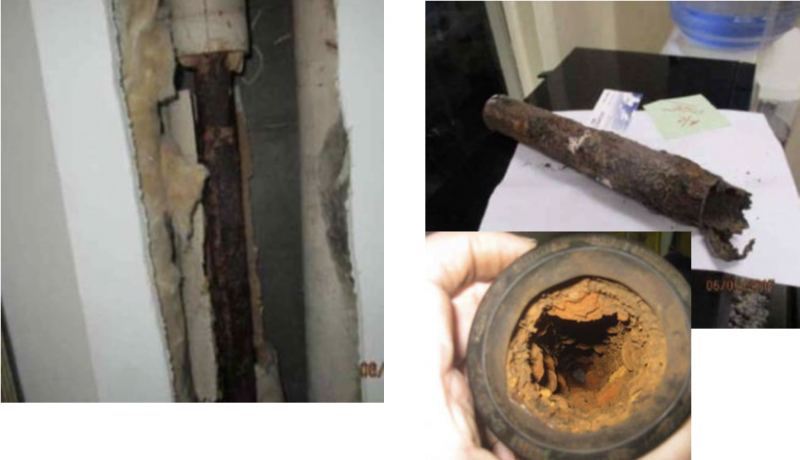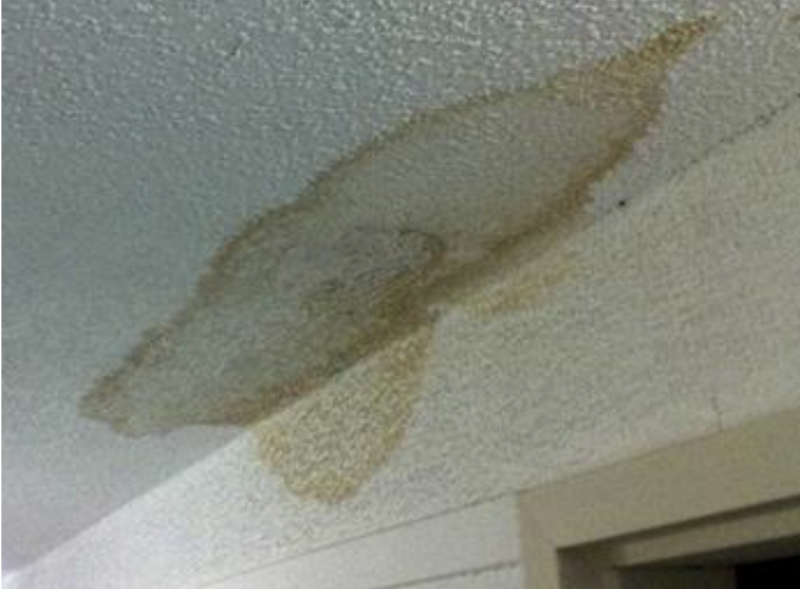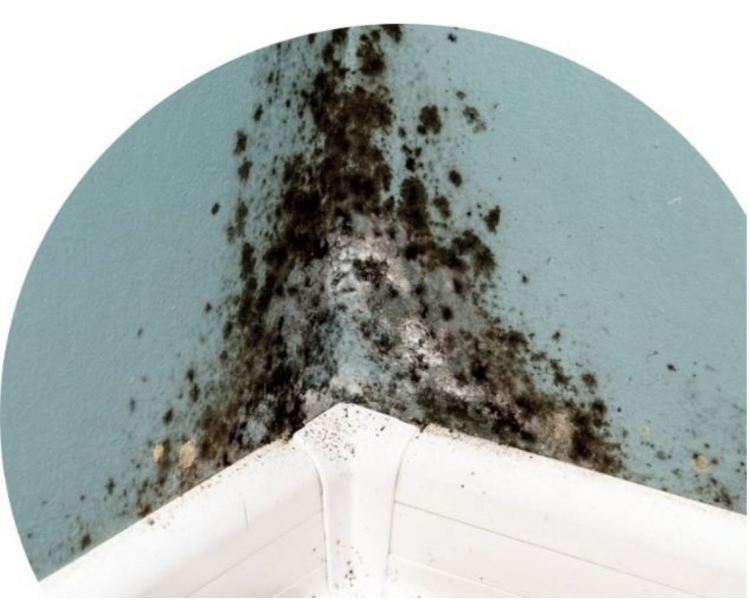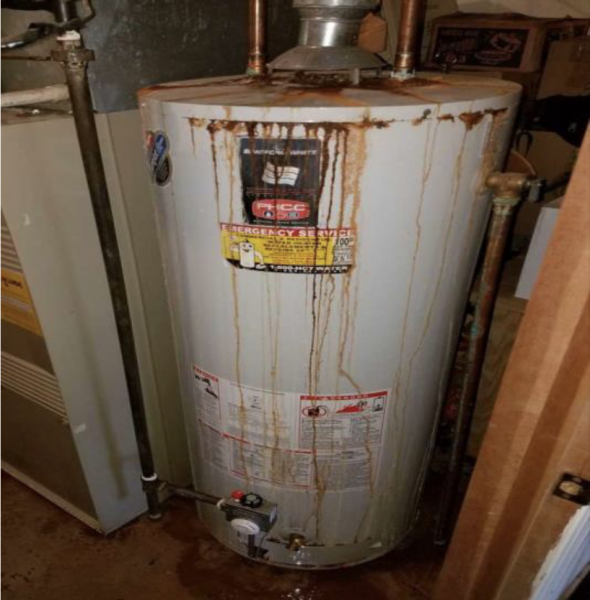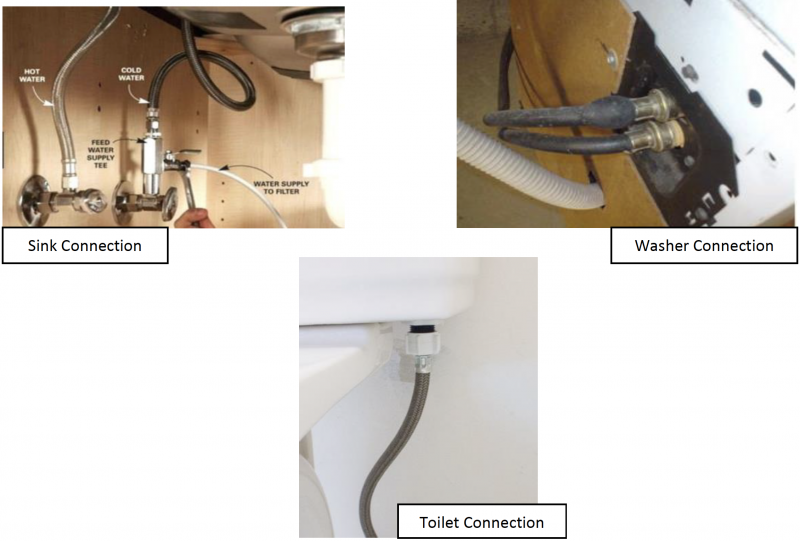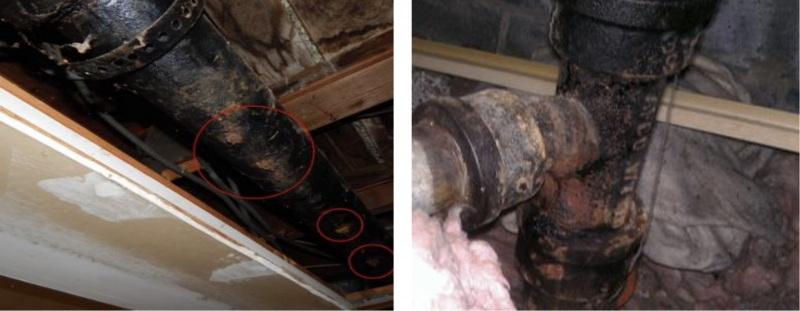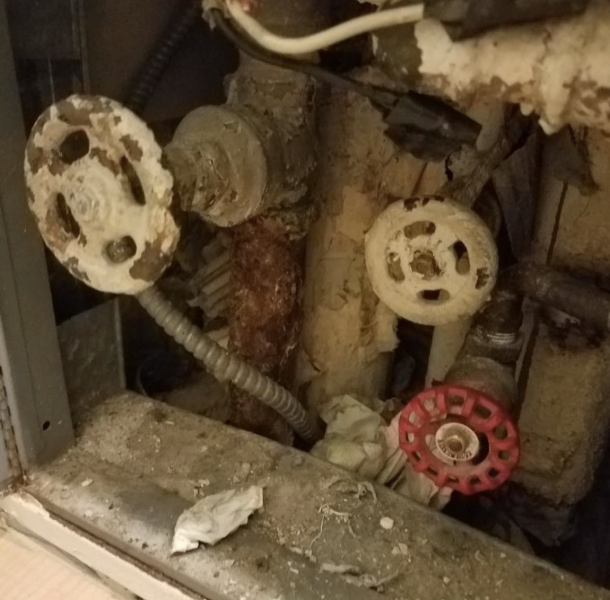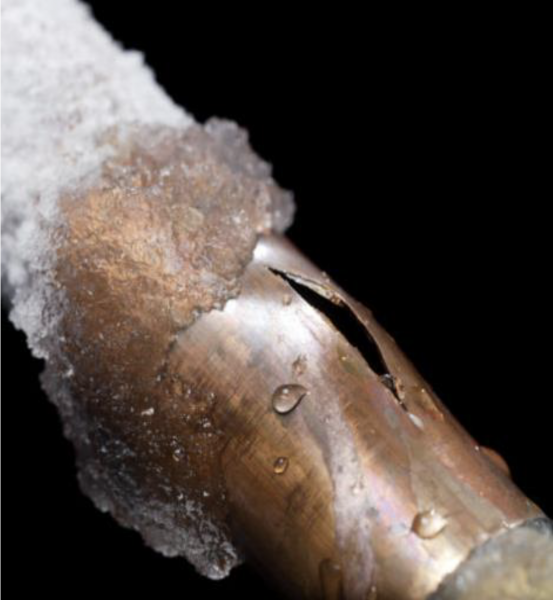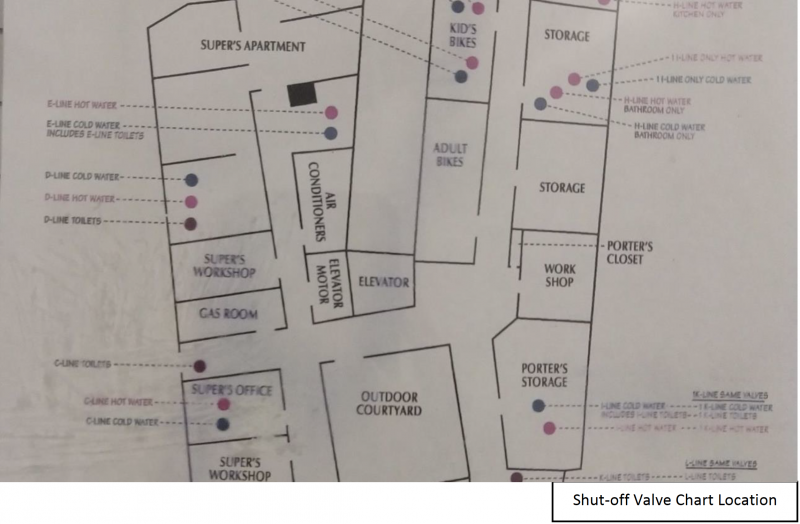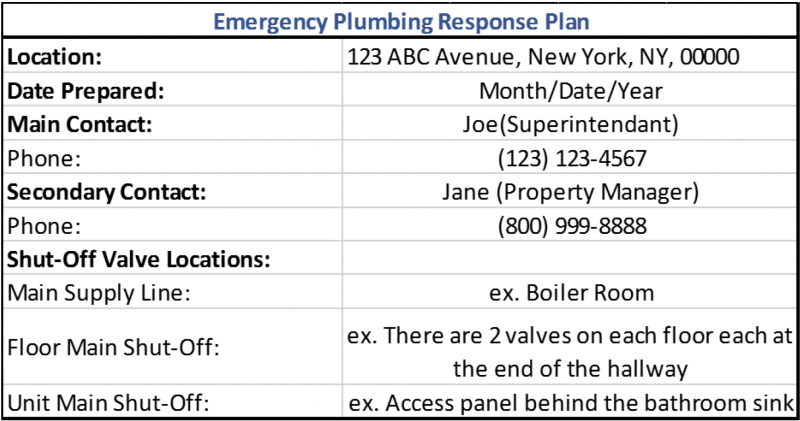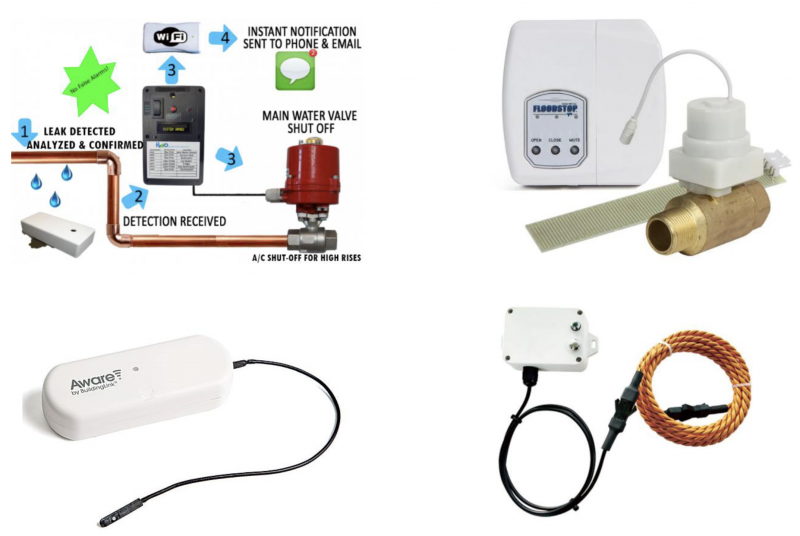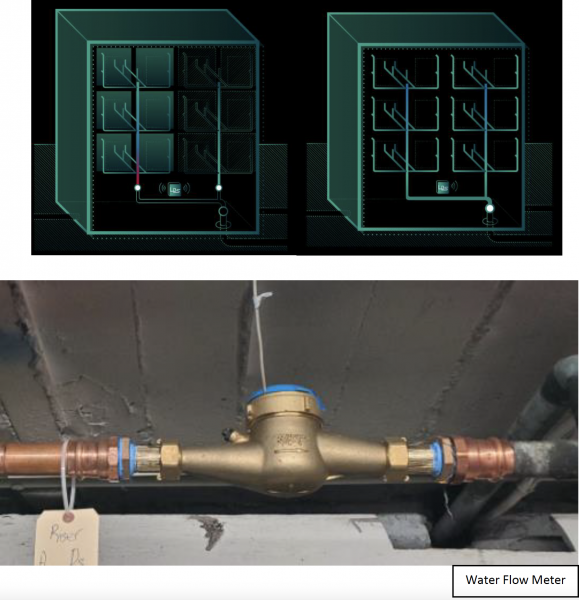Water damage is one of the leading causes of property damage for property owners and managers. Physical damage from a water leak can lead to business interruption, tenant displacement and potential health hazards from mold exposure.
The purpose of this guide is to educate property owners and managers on:
- Recognizing plumbing and its defects.
- Understanding the importance of plumbing maintenance.
- Reducing the frequency and severity of water damage claims.
What's Behind Your Wall?
Knowing the type of pipes behind your walls is important when idenifying potential risks of water damage.
Copper/Brass
Copper has been used predominately in plumbing since the 1930s. It is known to be highly corrosion resistant, durable, and long lasting. It is typically used as distribution piping for hydronic heating systems, air conditioning, refrigeration systems, domestic hot and cold-water service lines and branch distribution lines (toilets, sinks, showers, etc.).
Although copper is largely impervious to corrosion, it is still susceptible under certain conditions. Corrosion appears in the form of pits, cracks, or discoloration. Exposure to moisture and air over time can degrade the useful properties and the strength of the pipe.
Galvanized Steel
Galvanized steel plumbing consists of a steel pipe encased with a thin zinc coating, used to prevent corrosion and rusting from reaching the steel. The plumbing material was most commonly used in buildings constructed before the mid 1960s. The connections are threaded and, if scratched, will present as a silver-gray color. Galvanized plumbing is commonly found in hot and cold water supply lines. Life expectancy is between 40 and 50 years.
As the zinc coating leeches off the pipe, galvanized plumbing begins to rust from the inside out. If left undetected it can cause restricted water flow and potential rupturing. Rusting typically begins at the threads or ends, where the pipe is thinnest.
Galvanic corrosion occurs when two dissimilar metals are in contact with one another. If left undetected, it can cause restricted water flow and potential rupturing.
The chart below lists the corrosion potential between common plumbing materials. The chart details the probability of galvanic corrosion occurring based on the types of connected metals. (e.g.: if aluminum and copper are improperly joined galvanic corrosion will occur.)
Cast Iron
Cast iron plumbing is used primarily in drain waste and vent lines (DWV). It has been in use since the 17th century. Cast iron is known to be durable, corrosion resistant and long lasting. Despite a 100-year life expectancy, failures are frequent between 60 and 75 years and even as low as 25 years.
Iron Oxide (Rust)
Rusting occurs on the surface of iron plumbing when exposed to air and moisture over time. It is easily identifiable by the red or orange coating that forms on the exterior of the pipe. The build-up of rust can cause water flow restriction which can lead to back-ups. The pipe eventually becomes brittle and crumbles, causing leaks. Failure modes include circumferential breaks, longitudinal cracking, bell splitting, shearing and spiral cracking.
Early Signs of Water Damage - Preventive Measures
There are many ways to prevent water damage before it occurs, establishing best practice mesures can prevent long-term structural damage.
- Investigate and repair causes of stained, warped or buckling ceilings, floors or walls.
As water is absorbed into walls or ceilings, walls may warp or lose their integrity. There are noticeable stains and discoloration. Stains which continue to grow and indicate a potential plumbing leak. - Address causes of mold/mildew.
Mold and mildew growth appear in areas with excess moisture. Accumulation of stagnant water can cause musty odors. You can smell it before seeing it. - Maintain HVAC equipment per manufacturer's instructions and schedule replacement before end of life expectancy. Hydronic heating and cooling systems such as steam boilers, hot water heaters, and water source heat
- pumps fail for several reasons including:
a) Condensate drain line back-ups.
b) Steam line failure.
c) Equipment use beyond normal life expectancy.
d) Poor contractor workmanship.
e) Inadequate maintenance. - Evaluate supply lines and fixture connections for signs of corrosion and leaks and replace old and/or damaged hoses.
a) Sink cabinet.
b) Toilet supply.
c) Washer supply. - Evaluate condition of exposed drain lines.
Typically found in building basements.
Risk Reduction
A proactive risk management plan can prevent water damage before it occurs. Evaulate and prepare pipes, HVAC systems, and valves to prevent future emergencies.
- Plumbing Evaluation
a) Identify areas where exposed plumbing and signs of leaks can be easily observed. Timely replacement of plumbing will prevent potential water leaks and system failure.
b) Keep record of reported leaks and blockages and areas with unusual pooling of water. Reviewing records periodically will help determine when plumbing replacement should take place.
c) Inspect and service HVAC equipment per manufacturer's instructions. Log records of maintenance for building and individual unit components. - Winterizing Your Property
a) Insulation - Exposed piping can freeze in unheated areas. Ensure proper insulation is installed in the surrounding area.
b) Maintain adequate heating in interior spaces.
c) Reduce drafts - Loose fitting windows or doors can be a major source of heat loss in a building. Properly seal with weather proofing material to retain heat.
d) Maintain heating equipment - Properly maintain heating equipment to ensure maximum efficiency. Service your mechanical equipment per manufacturer's instructions. - Develop an Emergency Response Plan
a) In the event of a water leak, property managers and owners should develop a response plan. Timely reponse can minimize the impact of property damage, repair costs, and business interruption.
b) Identify a main point of contact for plumbing emergencies. Specify roles, responsibilities, and availability.
d) Ensure that your licensed contractors are readily available for emergency repairs. - Leak Detection and Automatic Shut-Off Valves
a) Provide early warning notifications in the event of an accidental discharge.
b) Improved technology allows for easy installation and remote monitoring through integrated applications (text messaging, email alerts, audible alerts).
c) Basic models provide local alerts and monitor temperature and humidity while the most advanced systems may have integrated water shut off valves. - Water Flow Monitoring Systems
a) Flow monitors are connected to the main water supply to provide real-time data tracking of water consumption, to detect leaks, and to verify the effectiveness of repairs.
b) Individual riser monitoring - Provide leak detection using line by line consumption data, eliminating the need for building wide inspections in the event of increased total water consumption.
The content herein is for informational purposes only without warranty of any kind, whether express, statutory, or implied, and the information contained herein does not constitute legal advice. You should contact an attorney to obtain advice with respect to any particular issue or problem. Greater New York Mutual Insurance Company and its affiliates assume no liability whatsoever for any errors or omissions in any content contained herein.
